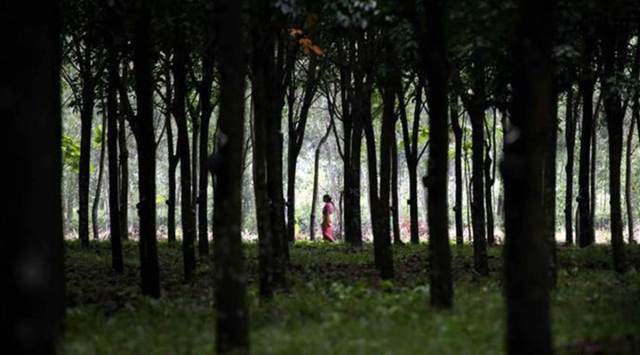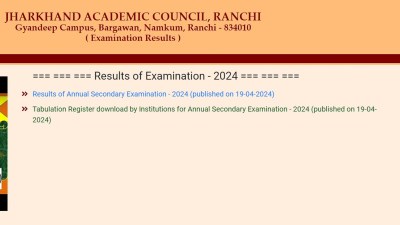- India
- International
From 2012, Odisha saw steep fall in recgnition of FRA claims: study
The report also says that there is a huge gap between the minimum potential forest areas to be recognised under the Forest Rights Act and recognised forest areas as of April 30 — even 13 years after its implementation.

Odisha has seen a drastic decline in recognition of forest right claims over the last eight years, a study by the Tata Institute of Social Sciences, Mumbai has found.
The report also says that there is a huge gap between the minimum potential forest areas to be recognised under the Forest Rights Act and recognised forest areas as of April 30 — even 13 years after its implementation.
“The recognised forest areas are only 12.58% of the minimum potential areas to be recognised under the Act. With the current pace of recognition of forest areas, it will take close to nine decades to saturate the recognition of the minimum potential forest areas in the state,” the report states.
A total of 4,52,781 forest rights claims had been recognised as of April 30 — but over 83% of these had been recognised by the end of 2012 itself, pointing to a steep decline.
Forest rights claims can fall under two categories — individual forest rights (IFR) and community forest rights (CFR).

The recognition and rejection ratio of the total IFR claims filed come around 71% and 13% respectively, while that of CFR accounts for 46% and 7% respectively. “Hence, these ratios imply that for every 10 claims filled for IFR, around 7 to 8 claims were accepted while for CFR, every 10 claims filed only 4 to 5 claims were accepted. Furthermore, the low rejection rates in the CFR are only the result of a higher number of pending cases which accounts for 48%. Similarly, the IFR constitutes 98.74% of the total rejected claims which is far higher than that of CFR which accounts for 1.26% only,” the study says.
A district-wise analysis further shows huge gaps between districts due to pending claims and higher rejection.
“While the state-wise analysis on the implementation of FRA has been widely discussed and reported, we have tried to understand how different districts at the state level are placed against each other in the implementation of FRA. There have been discussions around how the process of forest rights claims takes place at the district and village level, and what are the challenges in the claim process. But there has been at best only an ad-hoc accounting of how the districts are performing in the forest rights claims recognition process. The purpose of this report is to fill this gap by highlighting the district-wise status of the implementation of FRA in Odisha,” said Geetanjoy Sahu, assistant professor at TISS School of Habitat Studies, and co-author of the report.
The report found that most Schedule V districts, or districts with a relatively higher proportion of tribal population, have high IFR recognition rates.
But not a single CFR claim was recognised in seven districts. These are Sundargarh (0/474), Baleswar (0/164), Kendrapada (0/145), Subarnapur (0/91), Khorda (0/30), Jajapur (0/26), and Puri (0/2).
Among the partial and full Schedule V districts, the rate of recognition of IFR for Nabarangapur district is 100% which is better than all other districts. “Nabarangapur is closely followed by the Rayagada district, which has a 97.97% of rate of recognition. Most of the Schedule V districts have high recognition rates. Separately, the experience of Sambalpur district is comparatively low in the recognition of IFR claims, which stands at 41.34%. The rate of rejection is considerably low in all Schedule V districts. The highest rate of rejection is in the Ganjam district (48.72%), followed by Kendujhar (20.33%) and Sambalpur District (15.51%). The highest average recognized IFR area is in Malkangiri district i.e., 2.52 acres and the lowest average recognized IFR area is in Baleswar district i.e., 0.41 acres,” the report states.
“The ratio of recognition of CFR claims is highest in Kandhamal (94.47%), followed by Kendujhar (92.91%), Rayagada (79.30%), Kalahandi (56.57%), and Baragarh (43.86%). The report also states that not a single CFR claim is recognised in seven districts in the state including Sundargarh (0/474), Baleswar (0/164), Kendrapada (0/145), Subarnapur (0/91), Khorda (0/30), Jajapur (0/26), and Puri (0/2). The ratio of rejection of CFR claims against the total received CFR claims is highest in Kendrapada (100%), followed by Baleswar (95.12%), Angul (81%), Jharsuguda (75%). The highest average recognized forest area for CFR claim is in Kalahandi district i.e., 128.21 acres and the lowest average recognized CFR area is in Kandhamal district i.e., 1.28 acres.
Apr 19: Latest News
- 01
- 02
- 03
- 04
- 05






































